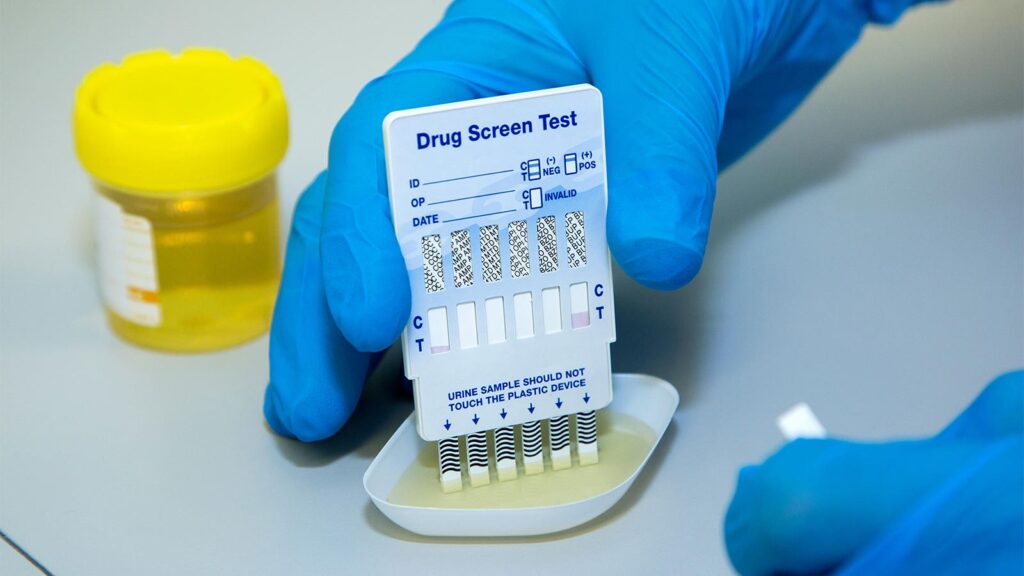Zha is a family medicine doctor and a nonfiction writer.
“We were stripped naked. We were asked to cough. It was like a movie…We knew nothing about what the allegation was,” Simon Cofie recently told NBC News, recalling his 2017 arrest after a bottle of his wife’s folic acid (which she was taking while trying to conceive) tested false-positive for ecstasy. Cofie and his wife were wrongfully jailed for 2 weeks.
According to the University of Pennsylvania report Guilty Until Proven Innocent: Field Drug Tests and Wrongful Convictions, Cofie is likely among the 30,000 people in the U.S. erroneously arrested each year for drugs they did not take. Presumptive drug testing, which is heavily utilized by the police, is speculated to be one of the largest contributing factors to wrongful arrests and convictions in the country. While media attention is on the incorrect application of these field tests, we cannot overlook a big part of the picture, as pointed out by the report: Black Americans, such as the Cofie family, are more than three times more likely than white Americans to be arrested because of such drug test errors.
Black people make up only 12% of the U.S. population, yet they account for one in three drug arrests nationally. If these numbers don’t surprise you, it’s because you have heard similar drug test statistics in another major branch of our society: medicine.
Drug tests, when administered with implicit racial biases unchecked, become another tool to marginalize Black people in America, including in the healthcare system.
Black people, especially Black women, have been the target population of drug-related prosecutions throughout history. The”crack babies” epidemic of the 1980s and 1990s is a perfect example. According to the book Killing the Black Body by Dorothy Roberts, between 1985 and 1995, hundreds of women across the U.S. were criminally charged after their babies tested positive for drugs. The majority of these women were poor, Black mothers.
While the rate of drug use was the same among Black and white pregnant people, Black women were 10 times more likely to be reported for drug use than white women. Additionally, the very fact that prosecutors zoomed in on crack addiction rather than other more prevalent or more harmful substances reflected their racial motives. For instance, according to the American Academy of Pediatrics, compared to cocaine, alcohol abuse has greater negative effects on fetal growth, birth defects, and the future growth of the child. Roberts pointed out in her book that if the focus of the war on drugs were alcohol, cigarettes, or meth, the defendants would have been disproportionally white.
This implicit racial bias in drug screening and reporting persists today in medicine. Even without a history of drug use, Black patients are still more likely to be tested for drugs during pregnancy. Since no national universal drug screening protocol for prenatal or neonatal care exists, most urine drug screens in newborns are done by clinical indications. One of these indications is the mother’s failure to obtain adequate prenatal care. And Black women are over twice as likely to receive late or no prenatal care compared to white women due to their lack of access to affordable and timely care. This helps justify why the bar to screen Black families for drug use is lower than for white families.
Yet, even in the counties where universal screening protocols are in place, Black newborns who are positive on toxicology screening are still four times more likely to be reported to Child Protective Services at delivery than white newborns with positive results. In other words, Black people are preferentially targeted for drug screens, and once positive, they are also preferentially reported to the authorities. The system sets them up to fail at every step.
This racial disparity goes beyond the beginning of life care. A recent large, multi-center study conducted in Boston showed that between 2007 to 2019, among patients with terminal cancer, Black and Hispanic patients were less likely to receive opioid medications for end-of-life care. Yet, compared to white patients, Black cancer patients were still more likely to undergo urine drug screening.
To be clear, it’s not always the individual doctors or nurses who are targeting Black patients — at least not intentionally. And demonizing them doesn’t help fight against systemic racial injustice. Implicit bias, by definition, isn’t the person’s conscious doing; and oftentimes implicit bias is what’s driving these drug tests.
Luckily, there are ways to combat these biases. According to the American Bar Association, the first step to eliminating implicit bias is to admit or assume that we all have it. We can all add the question: “How would I make this decision differently if the person in front of me were not a person of color?” to our mental (or literal) checklist. The American Academy of Family Physicians suggests that fairness should be institutionalized in every organization by including and listening to diverse voices. This is especially important at the leadership level. These voices, in turn, are more likely to question the existing protocols and critically analyze their impact.
Imagine how your world would be turned upside down if you spent 2 weeks in jail for carrying your prenatal vitamins, or if your newborn child was separated from you for a medical condition for which another woman of a different skin color received treatment. In her 1991 article Punishing Drug Addicts Who Have Babies: Women of Color, Equality, and the Right of Privacy, Roberts concluded that “the prosecutions punish for having babies women whose motherhood has historically been devalued.” Indeed, the racially unjust utilization of drug screens in law and medicine reflects this historical devaluing of Black people’s lives, health, and dignity. And it’s time to put a stop to it.
Mengyi “Zed” Zha, MD, is a family medicine doctor in Washington State and a nonfiction writer.
Please enable JavaScript to view the

